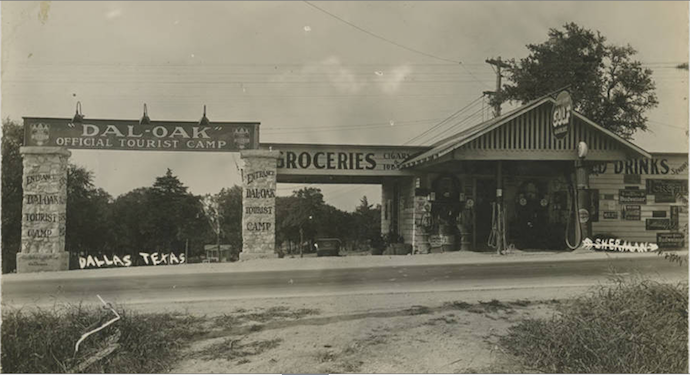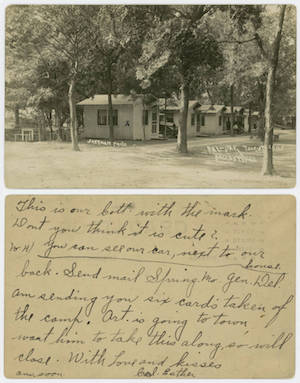 How one sleepy neighborhood was once the height of entertainment
How one sleepy neighborhood was once the height of entertainment
When car travel was brand new, and Texas roads were just getting stitched together, roadside businesses cropped up to serve travelers.
U.S. Highway 80, which includes Davis Street, was part of the Bankhead Highway system that ran from Washington, D.C. to San Diego.
One business that catered to drivers on the Oak Cliff stretch of the Bankhead was the Dal-Oak Tourist Camp. The camp was situated near what is now El Tivoli neighborhood, and was an early development on what once was dairy farms west of Hampton.
The Dallas Automobile Club, which affiliated with the American Automobile Association and was influential in the city’s early development, opened the camp in 1923. It was located on West Davis Street near North Boulevard Terrace.
It featured gas pumps and cabins for travelers as well as amusement. There was a 30,000-square-foot pool, fed by Oak Cliff’s artesian springs, complete with a sandy beach. Dal-Oak also had a park with picnic grounds and a golf course.
Then considered to be “about 4 miles west of Oak Cliff,” the Dal-Oak Tourist Camp’s amusement park was the site of community dances, banquets, concerts and fireworks shows.

A postcard sent by a tourist from Dal-Oak Tourist Camp.
Travelers to the tourist camp were assured fair prices.
“One thing a tourist never forgives is the custom of shopkeepers and gasoline men to ‘stick’ them with high prices because they are assumed to be one-time customers,” the automobile club’s manager told a newspaper in 1924. “The Dallas Automobile Club has established a commissary at the camp which sells goods at downtown store prices. The rate of 18 cents a gallon for gas in Dallas has also spread to the tourist camp and further established this city as a good place to come to.”
The automobile club sold the amusement portion of the camp — the pool, park and golf course — to a private company for $25,000 in 1926.
The name also changed to Oak Cliff Country Club, which is when the golf course, tennis courts and clubhouse became private, but the pool remained open to the public for an entry fee.
It later became Cliff-Dale Golf Club and then El Tivoli Country Club.
El Tivoli nightclub or supper club opened on the golf course in 1929 and somehow survived prohibition. It was located on West Davis at Reverchon Drive.
The country club, built in the mission revival style for $65,000, drew big bands, blues musicians and showgirl revues, and it was a big player in Dallas nightlife in the 1920s and ’30s.
By the 1940s, that kind of nightclub — with its pricey filet mignon and scotch highballs — was considered a bit lowbrow. Bigger, more glamorous cities at the time, such as St. Louis and Memphis, had opera houses while low-self esteem Dallas had supper clubs and ballrooms that were a little less refined.
The main Dal-Oak Tourist Camp building likely was torn down after a 1938 gas explosion, which seriously injured two employees and killed one other. Golf tournaments were played on El Tivoli course as late as 1944.
In 1945, a developer tore down the old El Tivoli nightclub as well as the original stone cottage that had been built by La Reunion colony’s Reverchon family in the 1800s.
A homebuilder had purchased the golf course and surrounding acreage (some of which was purchased from the Daughters of Charity of St. Vincent de Paul) to build 190 brick-veneer homes “with three bedrooms and all-tile baths.”
The developer, A. Pollard Simmons, bought the land for $50,000 and spent about $1 million to build the houses. He didn’t sell the homes but rented them to families in post-war Dallas.
In 1949, Simmons sold El Tivoli to another company for $1.75 million. That company put up for sale all of El Tivoli’s homes.
The nine-block El Tivoli neighborhood today remains a quiet, middle-class neighborhood of well-built homes. No remnants of the old tourist camp can be found.




